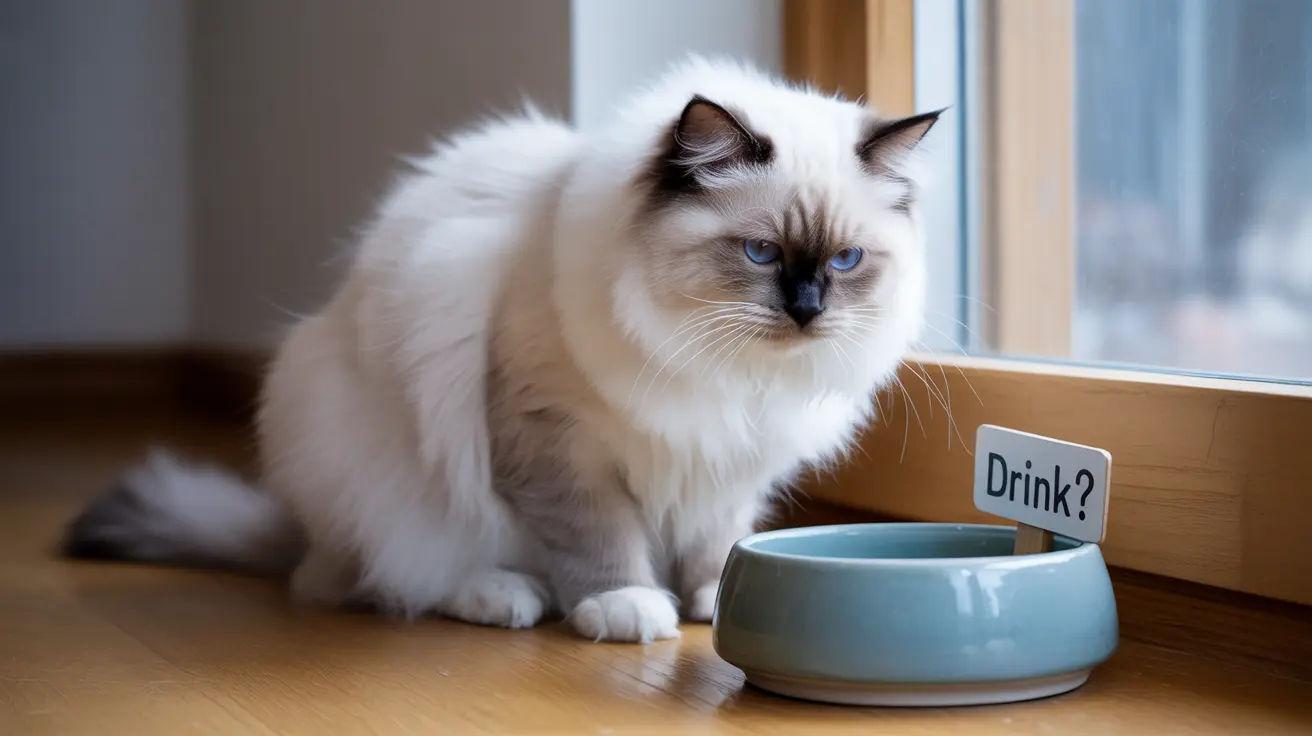Common Reasons Your Cat Hovers Near Their Water Bowl
When you notice your cat sitting by the water bowl for extended periods, it's natural to feel concerned. This behavior often signals underlying health issues that require attention. Let's explore why cats exhibit this behavior and what it might mean for their health.
While occasional interest in water is normal, prolonged hovering or sitting near the water bowl can indicate several medical conditions, ranging from manageable issues to more serious health concerns. Understanding these signs is crucial for providing timely care for your feline companion.
Medical Conditions That Cause Water Bowl Hovering
Chronic Kidney Disease (CKD)
Chronic kidney disease is one of the most common reasons cats spend excessive time near their water bowls. When kidneys begin to fail, they lose their ability to concentrate urine properly, leading to increased thirst and frequent urination. Cats with CKD may show:
- Excessive thirst (polydipsia)
- Frequent urination
- Weight loss
- Decreased appetite
- Lethargy
Diabetes Mellitus
Diabetes can cause cats to hover near water sources due to increased thirst. The body's inability to process glucose properly leads to:
- Increased water consumption
- Frequent urination
- Sudden weight changes
- Increased appetite
- Weakness or lethargy
Hyperthyroidism
An overactive thyroid gland can cause increased thirst and unusual water bowl behavior. Signs include:
- Excessive drinking
- Weight loss despite increased appetite
- Restlessness
- Vomiting
- Diarrhea
End-of-Life Signs and Water Bowl Behavior
Sometimes, a cat sitting by the water bowl can indicate they're nearing the end of their life. This behavior might be accompanied by:
- Reduced water intake despite hovering
- Significant appetite loss
- Social withdrawal
- Decreased grooming
- Difficulty moving or standing
When to Seek Veterinary Care
Contact your veterinarian immediately if you notice:
- Your cat sitting by the water bowl for extended periods without drinking
- Significant changes in water consumption
- Any accompanying symptoms like lethargy or weight loss
- Changes in urination habits
- Decreased appetite or activity levels
Monitoring Your Cat's Water Intake
To help your veterinarian diagnose potential issues:
- Track daily water consumption
- Note any changes in drinking behavior
- Monitor urination frequency and volume
- Document other behavioral changes
- Keep a log of appetite changes
Frequently Asked Questions
Why is my cat sitting by the water bowl but not drinking?
This behavior could indicate various health issues, including kidney disease, diabetes, or end-of-life changes. If your cat appears interested in water but isn't drinking, consult a veterinarian immediately.
Could a cat hovering over the water bowl mean it has kidney disease?
Yes, excessive time spent near the water bowl is a common sign of kidney disease, especially in older cats. Other symptoms include increased urination, weight loss, and decreased appetite.
What health problems cause increased thirst and water bowl hovering in cats?
Common causes include chronic kidney disease, diabetes mellitus, hyperthyroidism, and liver disease. Each condition requires specific veterinary diagnosis and treatment.
How can I tell if my elderly cat sitting near water is dying or seriously ill?
Look for additional symptoms such as reduced appetite, weight loss, lethargy, poor grooming, and social withdrawal. These signs, combined with water bowl hovering, warrant immediate veterinary attention.
When should I take my cat to the vet if it is spending too much time by its water bowl?
Seek veterinary care if this behavior persists for more than 24 hours or is accompanied by other concerning symptoms like reduced appetite, lethargy, or changes in urination habits.






